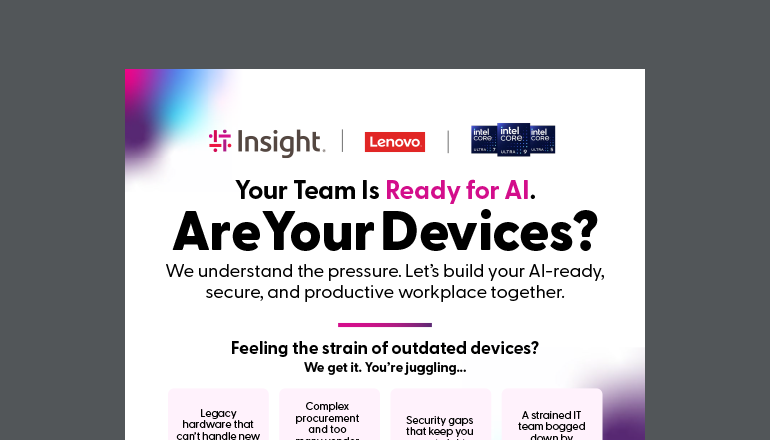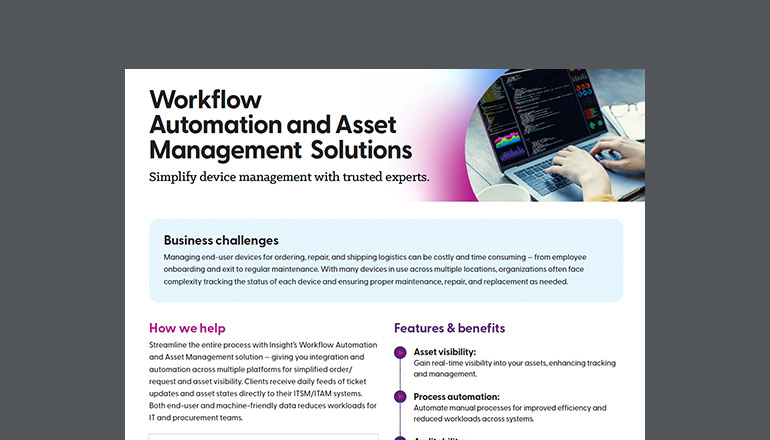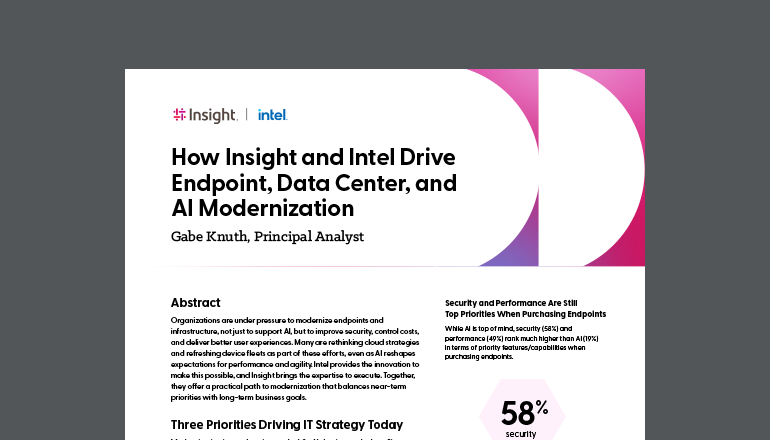Article Fleet Management: Questions to Ask Your IT Solutions Provider
By Insight Editor / 13 Jan 2017 / Topics: Devices

What is the most pressing concern facing your fleet today?
If you’re a fleet manager, you may struggle with controlling maintenance and fuel costs. Or, you may be most worried about promoting driver safety or tracking drivers’ time and logistical information.
Fleet managers face a mountain of tough operations challenges — some of which can keep you up at night. You can beat your most pressing operational challenges with help from the latest advancements in fleet management technology.
Fleet Managers Have Their Hands Full
According to a recent report by Verizon, over 1,100 fleet managers listed maintenance, operational costs, driver safety, time, and repairs in that order as their toughest operational challenges.
When asked how are they addressed these challenges, most of the fleet management professionals surveyed all said the same thing: Telematics.
When implemented correctly and integrated into IT infrastructure, telematics helps fleet managers streamline maintenance, cut repair/replacement costs, optimize routes, and enhance driver safety. It also helps reduce operational expenses and boost control of fleet performance.
This technology has come a long way since fleet managers and business owners first started using GPS ten years ago. Back then, GPS was rather limited. It could only collect vehicle location data, which was then processed by an in-house IT infrastructure.
Today, telematics devices gather a wealth of information for fleet managers and business owners — from engine performance and fuel consumption to driver habits and vehicle location and everything in between, with all this information being processed by an IT environment. They also track unauthorized vehicle use.
Two key needs are driving the rapid pace of technological change in the fleet management industry. One is the need for increased productivity. The other is the need for accountability. Mounting pressure from both is driving companies to develop new fleet management tools.
Do you provide the kind consulting services that can help me leverage a new fleet management tool?
With more companies relying on technology to remain competitive, IT consultation services are critical to long term success. To take full advantage of the information provided by new fleet management tools, you’ll first need to maximize your technology resources.
This can’t happen if the latest technical advancements have outpaced your IT service provider or its team lacks the experience to deal with a new IT challenge. Having the IT service provider with the right expertise can make up for your IT deficiencies.
Ideally, you want an IT solutions provider that offers consulting services that are flexible and adaptable, so they can be tailored to meet your needs. A skilled team of IT consultants can reduce costs, cut operating expenses, and free up your internal teams to focus on more critical business functions.
New Fleet Management Tools Abound
New fleet management are expected to change the fleet management industry dramatically. And that’s fine with many companies. In fact, perceptive companies are embracing the use of technology in fleet vehicles to reduce costs and boost performance.
As might be expected, the development of these new fleet management tools is shaped by IT trends that are impacting new product development in other industries, like cloud computing.
“The trend toward cloud computing will enable fleet solution providers to offer higher degrees of data and system integration,” says Mike Antich in an article on the website of Automotive Fleet. “The new technology capabilities will result in highly customizable solutions for fleet managers,” he adds.
Whether it’s a platform to test your custom apps or a place to store your sensitive data, the cloud is the perfect solution for small and medium businesses as well enterprise corporations.
Another IT trend impacting the development of new fleet management tools is mobile applications that feature tight integration in vehicles, according to Antich. Eventually, mobile devices will be the sole way drivers handle fleet tasks like mileage reporting, trip logs, and finding vendors. This creates a need for a potential bring your own device (BYOD) policy as well.





